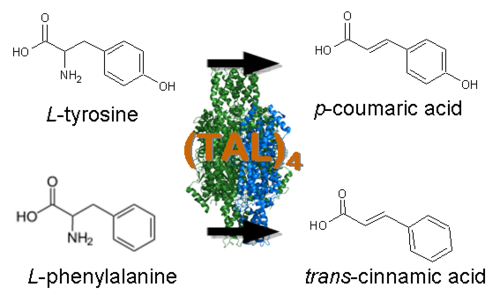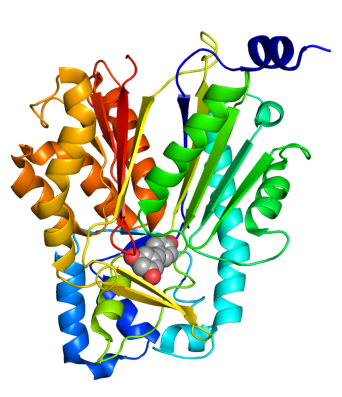Team:Rice University/STRATEGY
From 2008.igem.org
(Difference between revisions)
StevensonT (Talk | contribs) (→Metabolic Parts) |
StevensonT (Talk | contribs) (→Metabolic Parts) |
||
| Line 23: | Line 23: | ||
<BR><BR><BR><BR><BR><BR><BR><BR><BR><BR><BR><BR><BR><BR><BR><BR><BR> | <BR><BR><BR><BR><BR><BR><BR><BR><BR><BR><BR><BR><BR><BR><BR><BR><BR> | ||
| - | [[Image:STS.png|right|190px|thumb|[http://www.rcsb.org/pdb/explore.do?structureId= | + | [[Image:STS.png|right|190px|thumb|[http://www.rcsb.org/pdb/explore.do?structureId=1Z1F Peanut STS] monomer bound to resveratrol.]] |
*4-coumarate CoA ligase :: Stilbene synthase fusion protein (4CL:STS) - Completes the resveratrol biosynthetic pathway by catalyzing the conversion of ''p''-coumaric acid to resveratrol, with a stoichiometry of 2:1. The 4CL:STS fusion protein was selected because it has been shown to more efficiently produce resveratrol than coexpression of the proteins separately (possibly due to substrate channeling). | *4-coumarate CoA ligase :: Stilbene synthase fusion protein (4CL:STS) - Completes the resveratrol biosynthetic pathway by catalyzing the conversion of ''p''-coumaric acid to resveratrol, with a stoichiometry of 2:1. The 4CL:STS fusion protein was selected because it has been shown to more efficiently produce resveratrol than coexpression of the proteins separately (possibly due to substrate channeling). | ||
Revision as of 17:35, 29 October 2008
| SUMMARY ::: BACKGROUND ::: STRATEGY ::: CONSTRUCTS ::: RESULTS ::: ONGOING WORK ::: OUR TEAM ::: NOTEBOOK ::: GALLERY
SUMMARY ::: BACKGROUND ::: STRATEGY ::: CONSTRUCTS ::: RESULTS ::: ONGOING WORK ::: OUR TEAM ::: NOTEBOOK ::: GALLERY |
 "
"





